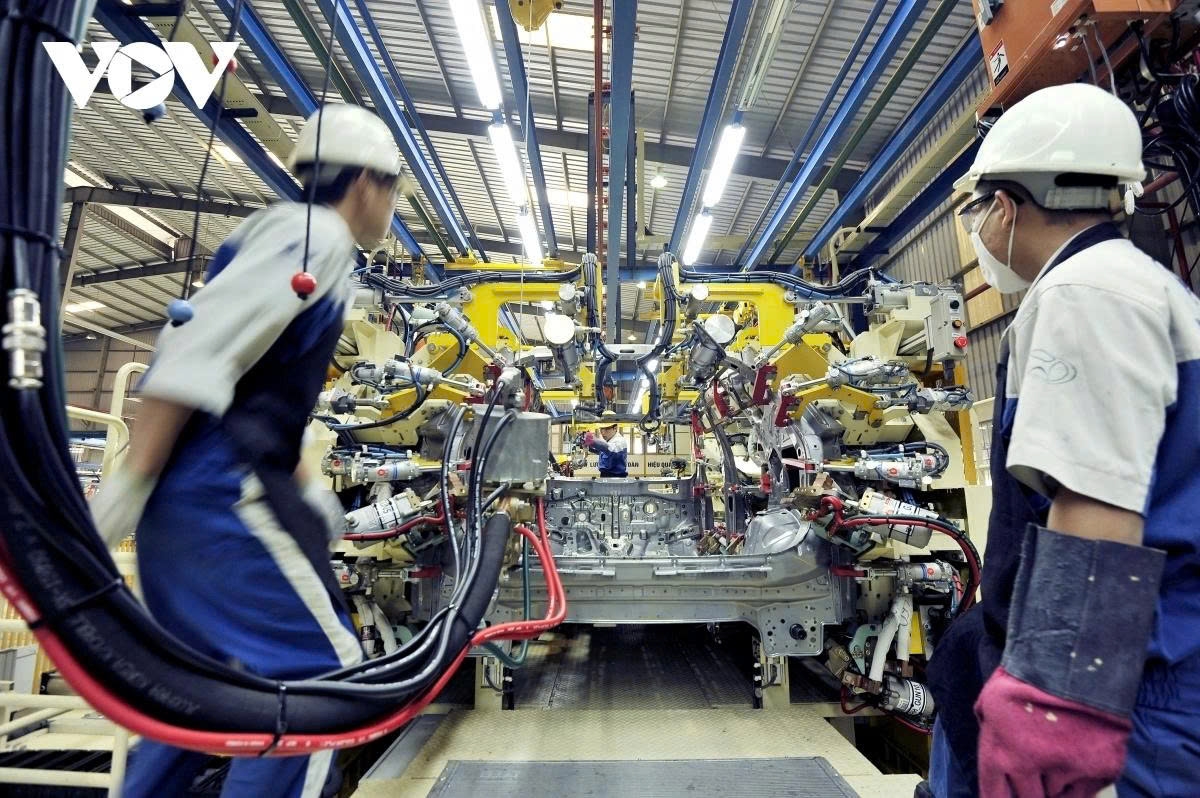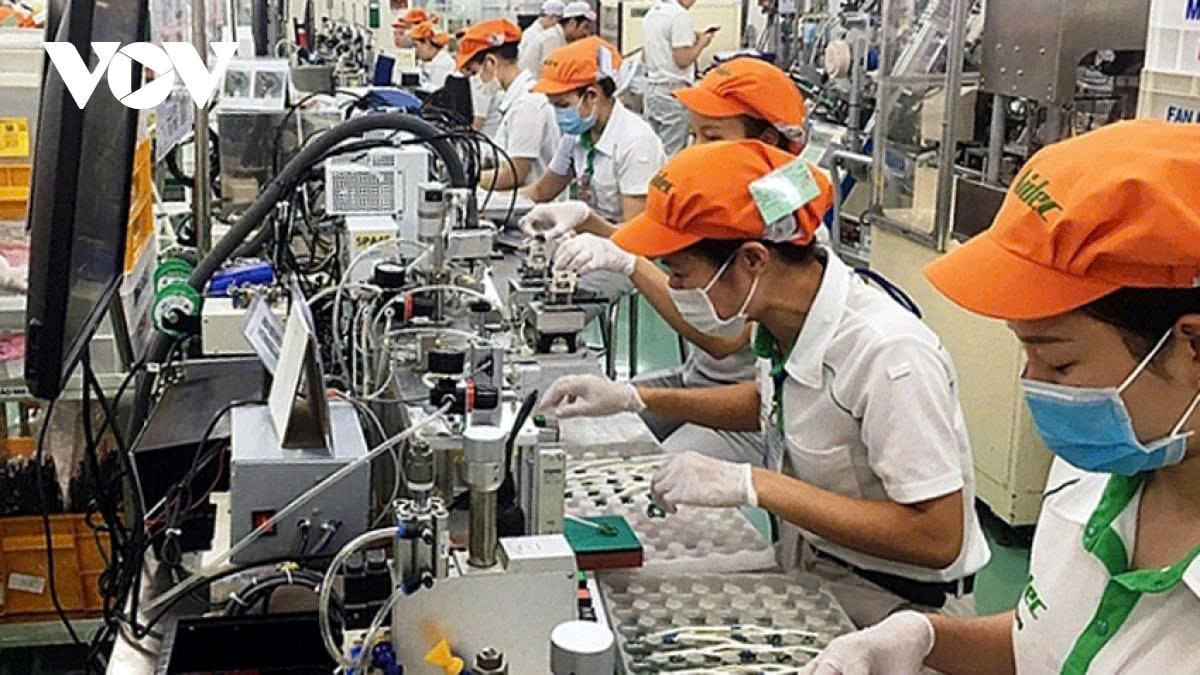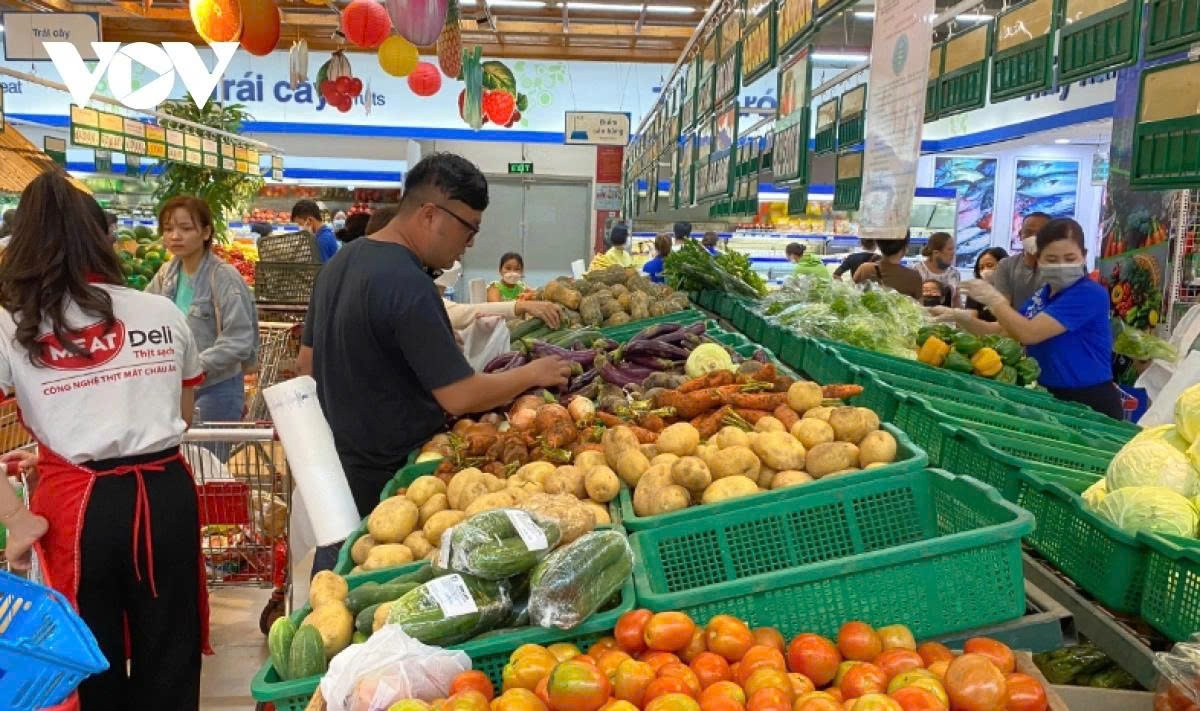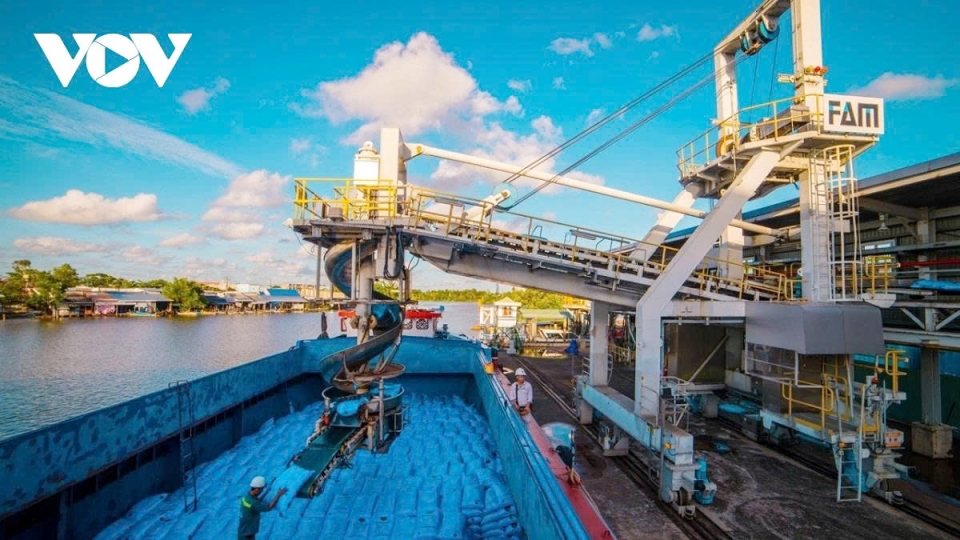What to know about major key drivers of Vietnam’s economic rebound in H1 2025
VOV.VN - Despite global uncertainties and challenges, Vietnam’s economy expanded 7.52% in the first half of 2025, with exports, investment and consumption continuing to be the three key growth drivers behind this impressive performance.
According to the National Statistics Office, exports brought back US$219.83 billion in the first six months of 2025, up 14.4% year on year. In quarter II alone, exports reached US$116.93 billion, up 18.0%.
Meanwhile, total retail sales of goods and consumer service revenue were estimated at VND3,416.8 trillion (US$130.7 billion), up 9.3% year on year. Total disbursed social investment capital was estimated at VND1,591.9 trillion (US$60.9 billion), up 9.8%.

Total registered foreign direct investment (FDI) reached US$21.52 billion, a 32.6% increase over the same period last year. Large-scale projects in high-tech, renewable energy, semiconductors, and electric vehicles were newly licensed or expanded.
Dr. Le Duy Binh, managing director of Economica Vietnam, noted the national economy in the early months of 2025 showed impressive growth. He cited data, saying exports, investment, and consumption serve as the main contributors to this impressive performance.
Manufacturing and processing remains the backbone of exports, growing over 10%. Domestic consumption also saw near double-digit growth. These factors, combined with emerging new growth drivers, are expected to help Vietnam achieve its full-year growth target of 8%, he said.
The tourism industry was a significant contributor to total retail and service revenue growth. According to the National Statistics Office, rising domestic travel demand during holidays and summer, along with a surge in international tourist arrivals, positively impacted trade and services.
With favourable visa policies, enhanced marketing and promotional campaigns, and major national celebrations, international tourist numbers rose sharply. The first six months of 2025 saw Vietnam welcome nearly 10.7 million international visitors, up 20.7% year on year.

In H1 2025, exports of manufactured goods accounted for about 85% of total export turnover, confirming the industrial sector’s vital role in export and overall economic growth.
Pham Van Quan, deputy director of the Department of Industry under the Ministry of Industry and Trade, said the Index of Industrial Production (IIP) in the first half rose by 8.7% year on year compared to only 3.7% in the first half of 2024.
Manufacturing and processing was the core growth engine, posting an increase of 11%. Other contributors were electricity production and distribution (up 5.2%), electronics and components (up 14%) driven by recovered orders from the US and EU, and mechanical engineering and metal industries (up 9.3%), supported by strong domestic demand and public investment disbursement.
FDI continues to play a crucial role in boosting aggregate demand through various channels. In the first half, FDI disbursement hit US$11.72 billion, up 8.1%, the highest H1 disbursement in the past five years. This outcome is notable given the slowing global investment flows and reflects the strong efforts by both national and local authorities.
“Vietnam’s FDI attraction policies remain favourable. Foreign investors are drawn by political stability, fast economic growth, and competitive advantages in taxes, labour, and energy,” said Nguyen Quang Huan, National Assembly deputy and vice chairman of the Vietnam Association of Private Entrepreneurs.
“However, we need to continuously upgrade our investment policies to attract high-quality investors and global technology giants,” he said.

While the three traditional growth pillars performed well, experts also pointed out several risks and challenges the national economy faces. US trade policy shifts, geopolitical tensions, and supply chain disruptions are creating uncertainty for exporters and FDI attraction.
“It’s important to stimulate domestic aggregate demand further because this is essential for long-term economic stability and growth. We must also create more jobs to expand purchasing power,” said Assoc. Prof. Dr. Nguyen Thuong Lang from National Economics University.
“In addition, we need to enhance the real competitiveness of Vietnamese goods, as foreign-invested enterprises still dominate the import-export landscape,” he noted.





